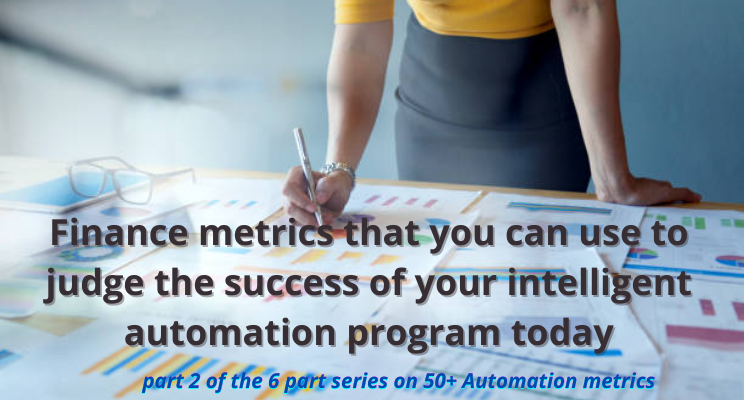Why you need to ‘sell’ RPA and Intelligent Automation to your business, and how to keep the right kind of attention needed to succeed – Part 3 of 4
The right time to start selling the benefits of an RPA and Intelligent Automation program is before you have even begun. Seed funding will be required to complete a proof of concept regardless of how big or small the initial step. The Proof of Concept stage is a perfect place to engage and communicate with the key stakeholders you identified as part of your initial stakeholder mapping exercise.
Proof of Concept:
Large and small organisations need to test concepts before they begin spending large amounts of time and cash investing in digital change. Therefore, it is important to dip a toe in the water to see how hot the water is. The proof of the pudding is in the eating and a Proof of Concept or Proof of Value can get an organisation the evidence it needs to run forwards at pace.
The proof of concept stage should be exciting. Ideally all eyes will be on the program and everyone will be behind it IF you have sold the benefits of digital transformation so far. It is critical to pick the right process to test theory and practice. This should be a known pain point that is both beneficial to solve and solvable within a narrow period of time (e.g. 12 weeks).
Remember to start small with a pilot project that demonstrates capability and results and validates the hype surrounding RPA. Make the business case about driving improvement within a specific business unit.
Prior to beginning there are several ways to sell a POC including:
1. Run a robot naming competition. Studies have shown that naming a bot humanises it. Folks engaging with the robotic digital workforce are less threatened by, and therefore are more accepting of, ‘Suzy or Bob the bot’ rather than ‘job killer 1’. Digital workers become digital assistants who are there to support, rather than supplant the team.
2. Run a robot building competition. Getting folks resistance barriers down and fun factor up is key to digitally transformation. So grab as much glitter, glue, loo roles and cardboard as is legally safe, and have yourself a robot building competition. This exercise is tremendous fun, and it promotes teamwork and healthy competition. Remember to have a jokey judge and well as fun prizes to hand out at the end. Video and photograph the building competition so your can use these materials for internal publications to advertise the program.
“Making automation fun is one of the best ways to engage a business. If you have sticky tape, cardboard, glue and glitter you can create a robot building competition no one will forget. Bring out the inner child in the business and amazing things happen. Make it a fun competition. Award fun prizes. Take photos and post them on your automation page. Put the cardboard robots up around your office and people wont stop talking about robots for months”
Faisal Iftikhar, Global Head of Automation
3. Run lunch and learn sessions. If an organisations process are digitised and customers are using them, but your employees don’t understand what is happening, then separation is created between them. This makes it impossible for your employees to support your efforts and is doomed to failure. Run lunch and learn sessions to explain, educate, illustrate and answer questions as to why, what and how things are changing as well as how folks can get involved. Remember to explain how this is benefitting the firm and tell positive stories. No one likes to back a losing horse so be honest with people. They can see what is, or is not working with their own eyes, even if you think they can’t.
“Understanding of what transformation is, what it isn’t and what it can deliver varies greatly. It is worth sharing an overview of your transformation plans with your vision and how it is intended to be used in your organisation, to educate and set expectations. Getting this right, engaging the organisation and delivering feedback will provide a solid foundation for relationship management.”
Mark Barrett, Automation Business Founder and Lead
4. Run an automation process suggestion competition. A pipeline of automation candidates is needed to run an automation program. A POC needs to be rapidly followed up with the next automation program kicking off as the POC ends to maintain interest and enthusiasm in the program. Many programs fail as they don’t have the next automation candidate lined up. Interest wanes and funding dries up, killing a program in its tracks before it has event started.
An organisation at the beginning of their digital transformation should also take into an account that automation is not the solution to every process. Identification of a process is also very important in digital transformation. ROI should be accurately calculated of the process to be automated. A scenario where the manual efforts in developing the automation project is more than the time saved after automation should not occur. Identification of the right process is key to digital transformation.
Do explain what good candidates look like prior to asking for suggestions as folks don’t want to think their idea is excellent, when it is entirely unsuited to automation, only for you to dash their hopes day one.
Parth Doshi – Learning By Doing
An automation hub that educates and guides the submission of suitable candidate processes can help. Manage expectations. Reply to everyone who submitted ideas to show you welcome their suggestions even if they are unsuitable for automation. These individuals may become champions or Citizen Developers who will add tremendous value at a later date so keep them informed and enthused. Award prizes e.g. time off for time saved for the best ideas.
- How to build a business case for Intelligent Automation and Robotic Process Automation
- 30 ways to build a pipeline of processes suitable for Robotic Process Automation (RPA) and Intelligent Automation (IA)
5. Run the POC. Remember to document the journey (codify learning, photograph, blog and vlog every step) from the team, and more importantly the benefitting end customers point of view. Keep the business informed as to what is happening. Ensure you keep your executive sponsor up to date and make it particularly easy for them to keep the rest of the executive team informed and educated as to the progress being made.
When the POC is complete, video the win (where the end beneficiary talks about the benefits) so others can see and hear this (e.g. time back, better employee and customer experience, what is happening with the freed up time, etc). Provide the video to executives for their stand-ups, townhalls (try get a speaking slot) etc. so this can be used many times over to sell RPA to the wider business.
“RPA, AI, and ML are completely data driven. If you haven’t drunk the Kool-Aid by now, you are behind the curve. It doesn’t matter if you are just making the Kool-Aid, but you have must have at least poured the package and started to mix it with water. It might be bumpy at times, there is a learning curve for business units, for stakeholders, for the entire company-but the end result, is the best, ridiculously simple, inexpensive drink you’ll ever need.”
Dani Rickard, Automation Senior Advisor
Author advice note: Don’t forget to communicate to communicate and motivate your RPA | IA team too. Never assume they understand everything that is happening or that they will remain motivated when there is an inevitable bump in the delivery road.
“People fear the unknown and they will not help you accomplish your transformation if they are uneasy with the technology or feel that automation is being added for the sake of automation. Focus on helping to educate the people within the organisation on the value of automation and get them comfortable with the concepts. Once you do this, you won’t have to “sell” them everything. They will be excited for the change, right alongside you.”
Ema Roloff, Digital Transformation Sales Executive
There is a daily battle for business resources. You need to communicate how your digital and automation program is, and will continue to deliver successful business outcomes just to earn the right to stay in the game.
Remember the best way to be successful, is to be successful. When you have something to talk about that clearly delivers against an organisations objectives, you are set for success. Once your digital and automation program are up and running not is the time to accelerate forwards. Part 4 will discuss a range of actions you can complete to key your program in the limelight so that it continues to get the time, money and attention it needs.
What ways would you recommend to sell RPA and Intelligent Automation within your organisation?
Other articles: If you like this article then you may find these articles of use also.
- 32 real world experts outline the who, what and why when it comes to running an Intelligent Automation Centre of Expertise for FREE
- How to build a business case for Intelligent Automation and Robotic Process Automation
- 30 ways to build a pipeline of processes suitable for Robotic Process Automation (RPA) and Intelligent Automation (IA)
- The biggest lie told to RPA customers – 50 robots equals success
- If your RPA program is not making money then it has failed.
- RPA – Proof of Concept (POC) or Proof of Value (POV)? Who cares, just get going!
- 40 Essential Selection Criteria to Choose an RPA Platform – 5 part series
- I meet 150+ developers and these are 20 signs of a truly gifted developer
- The A-Z of Robotic Process Automation, Intelligent Automation and Digital Transformation
- How to scale successfully – you have 60 seconds to reply
- Can organizations implement RPA without having a digital transformation strategy – what would you have said?
- FREE training sites for Robotic Process Automation, Intelligent Automation, Data Analytics, Artificial Intelligence & Digital Training Sites
- 22 way to cut the cost of an automation program – 4 part series
If this could benefit someone else tag them and share this.
Free to reuse: We are a community of RPA, digital analytics, digital transformation and Intelligent Automation experts with years of real world experience. We have stories to tell and the scars to show for it. We share our collective wisdom for free to simply provide as much value as we can to you. Therefore, if you want to post this article on your LinkedIn page then please feel free to do so. The more information we share within the RPA community the more likely businesses are to succeed with this excellent technology.
Further Help: If I can help you in any way please do reach out.
Note: The views expressed above are our views and not those of my employer or the employers of the contributing experts.









Leave a Reply